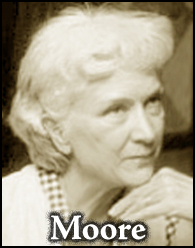Sunday, January 18, 2009
posted by Leo Grin
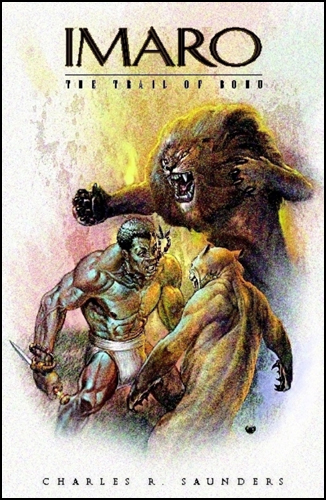
At long last, the revised third Imaro novel has hit the mean streets, courtesy of Brother Uraeus’ Sword & Soul Media. This continues where Nightshade Books left off after they re-released Imaro (2006) and The Quest for Cush (2007), saving both titles from several decades of being trapped in publishing limbo. With The Trail of Bohu finally out, all three of the original Imaro novels published during the 1980s are back in print, each fully updated and ready to lure a new generation of readers into Saunders’ beguiling vision of a mystical, ancient Africa filled with heaping portions of Sword-and-Sorcery, captivating lost cultures, and above all the potent aroma of living myth. Cover artist Mshindo Kuumba has done another bang-up job after his standout work on Dossouye (2008), capturing the essential appeal of the series with an image both primitive and modern, familiar and exotic.
Now that Imaro 1, 2, and 3 are once again available, Charles is set to get to work on the fourth and fifth installments in the series, neither of which have seen print before. He hopes to get them both out by the end of the year, concluding the saga that he began as a young fan in the 1970s, getting his first stories published in fanzines and short fiction markets that paid in contributor’s copies. It’s been a hell of a long road, but I think that time will remember Charles R. Saunders as a pioneer in his field that blazed trails through some very lonely and treacherous literary jungles and savannas, paving the way for black fantasy writers yet unborn. It’s why I published Steve Tompkins’ long interview with Saunders in The Cimmerian V4n5 (October 2007), one that ultimately was as much about Robert E. Howard and the subgenre he created as it was about Saunders and his career. There’s history being made here, and it behooves us to recognize it.
After Imaro, I suppose Charles might continue with the adventures of Dossouye in another book, or perhaps go back to working on Abengoni, his projected multi-volume fantasy epic of Africans and Celts that he’s described as his own Lord of the Rings. But I hope that somewhere in the middle of all that work he finds time to update and republish his 1990 treatise on the sweet science, Sweat and Soul: The Saga of Black Boxing From the Halifax Forum to Caesars Palace. It’s been sold out and virtually impossible to find for many, many years now, and sounds interesting as hell.
Saturday, January 10, 2009
posted by Leo Grin

C’mon…you know you want to click.
Wednesday, December 10, 2008
posted by Leo Grin
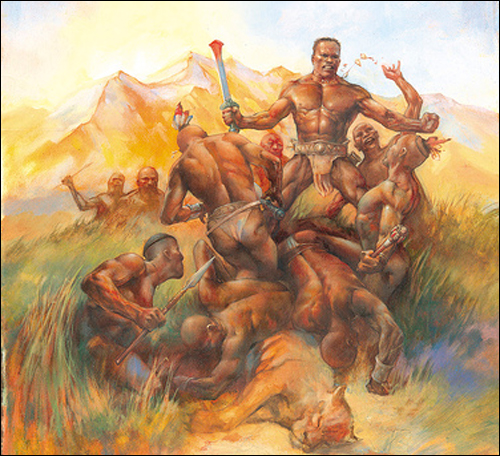
Head over to Charles Saunders’ blog, where he’s posted a pair of interesting references to his work from the way-back machine, both of which show his tales and worldview putting cracks into the veneer of the previously homogeneous genre of subcreated African adventure. And word on the street has it that more Imaro is due to be released soon from Sword & Soul Media, so keep an eye out for that.
Wednesday, November 12, 2008
posted by Leo Grin
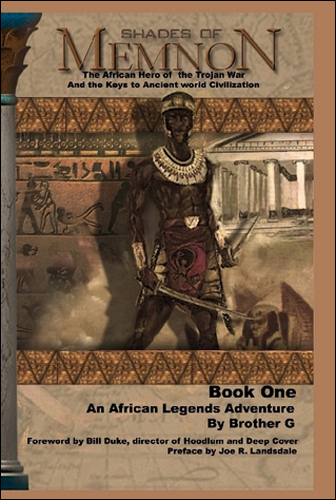
Charles Saunders has posted some new material to his website of interest to fans of fantasy and historical fiction.
First, for the politically minded there’s Chuck’s detailed thoughts on the recent election, from the perspective of a black North American fantasist intimately engaged in furthering appreciation of African culture, legendry, history, and dealing with what he ominously calls “The Legacy.” Worth a read, if you are so inclined.
More on point for this blog is Saunders’ review of a new series of historical fiction, one that furthers the inroads that Saunders himself pioneered with his creation and defining of what’s come to be known as “Sword-and-Soul” fiction. Brother G (pen name for Gregory L. Walker) has taken Greek mythology, quest narratives, ancestral memories, and loads of original Afrocentric worldbuilding rooted in ancient history, and used them to create a rip-roaring adventure that at times literally spans the world. Sounds very promising, with what sounds like hearty helpings of Howardian-style storytelling in the mix. I’m looking forward to reading them. You can buy them yourself here:
Book 1: Shades of Memnon
Book 2: Ra Force Rising
Book 3: African Atlantis Unbound
Steve adds: I note from Charles’ review that Memnon’s adventures come to us via “the framing device of the ancestral memories of a contemporary African-American man in a coma after a serious accident.” At this late date Walker didn’t necessarily borrow the framing device from REH or Jack London, but it’s cool to see the technique being de-mothballed.
Tuesday, October 14, 2008
posted by Leo Grin

In Charles Saunders’ latest blog post (click here and then select “Blog”), he dwells for a spell on one aspect of the rich tapestry of culture and myth that has fueled his Imaro and Dossouye tales. It’s a peek into why his worldbuilding is so effective and immersive. Budding fantasy writers take heed.
Also check out Charles’ Forum for a neat letter from a native African currently living in Sweden who likes both Saunders and REH.
Tuesday, September 30, 2008
posted by Leo Grin

Our favorite purveyor of Sword & Soul has added a great new post to his blog, wherein he casts his Imaro novels with a selection of Hollywood’s best and brightest. Just click over to Charles’ website and select BLOG from the menu on the left — the post in question is titled “A Nyumbani Facebook.” Great fun. His selection of Gary Coleman as Pomphis reminds me of the time I bumped into Coleman here in Los Angeles circa 1998 or so. I was waiting in line at a Koo Koo Roo restaurant here in Marina del Rey, and the diminutive actor strolled in to pick up a take-out order. No one bothered him, but there was a lot of staring at the Mutt and Jeff absurdity of his standing next to me, a six-foot-eight Jolly Green Giant.
Charles also has a new menu item on his site marked RECOMMENDED, in which he has listed a number of books and authors he’s read recently, all of whom he’s jazzed enough about to share with his own readers. Fans of Howard’s boxing tales — an ever-growing group which includes virtually everyone who hunts them down and reads them — will want to pick up the new biography of the great Golden Age pugilist Sam Langford that Charles discusses in one of his posts.
Finally, Charles tells me that the long-awaited Imaro III is almost ready to be released by Brother Uraeus’ Sword & Soul Media — The Cimmerian will let you know as soon as it hits the mean streets (you can get the first two Imaro novels, Imaro and The Quest for Cush, both completely revised and updated, at Amazon). And if you haven’t picked up Sword & Soul Media’s first release, Dossouye, what the hell are you waiting for? If I’ve said it once I’ve said it a hundred times: Saunders’ mythic, sorcerous, fantasticated Africa — lushly imagined with liberal amounts of thoroughly enchanting real-life history, culture, and folklore, and sprinkled with bloody droplets of Howardian fairy-dust — constitutes the most effective attempt at subcreation since Tolkien’s Middle-earth. Pick whatever nits you wish about plotting, pacing, wording, whatever — the world-building is that good.
Sunday, August 24, 2008
posted by Leo Grin

Fantasy master Charles Saunders has a new post on his blog about the African conception of elves in ancient legend. He even includes a short fable he wrote about them for a fan magazine in 1980. Interesting stuff, well worth a read.
And for those who for decades have always yearned to put a face to the creator of such iconic Sword-and-Sorcery characters as Imaro and Dossouye, the sage of Nova Scotia has added a picture to his Autobiography page.
Friday, July 25, 2008
posted by Steve Tompkins
[When Howard Andrew Jones writes about sword-and-sorcery and the desirability of “putting a new edge on an old blade,” it behooves those of us as protective of the subgenre as he is to pay attention, and perhaps pay him the compliment of trying to put our own thoughts in order. To that end, and with a bemused glance at a June 22 post by Gary Romeo, who never loses an opportunity to generalize about Howard purists even if he did lose the chance to celebrate the centennial of his nearest and dearest, I’m rolling out the following article, originally written in 2006 for an anthology that apparently could not be more snake-bitten were it to traipse barefoot through Stygia]
The subgenre of modern fantasy with which Robert E. Howard is nearly synonymous died down in the mid-1980s but did not die out. Far from it; sword-and-sorcery proved to be as difficult to kill as many of its protagonists. But before we can celebrate Howard’s legacy by following the subgenre’s fortunes for the last several decades, we need to establish what we mean by sword-and-sorcery. For starters, what is meant at least for the purposes of this article is an approach to heroic fantasy that became aware of itself when Howard decisively expanded on the promise and premise of Lord Dunsany’s 1908 story “The Fortress Unvanquishable Save for Sacnoth” with “The Shadow Kingdom” in 1929.
The verb “expanded” is chosen with no disrespect whatsoever intended toward Dunsany’s story; it is possible that during his much-debated involvement with sword-and-sorcery, L. Sprague de Camp never did the subgenre more of a favor than when he selected “The Fortress” for his anthology The Fantastic Swordsmen (1967).
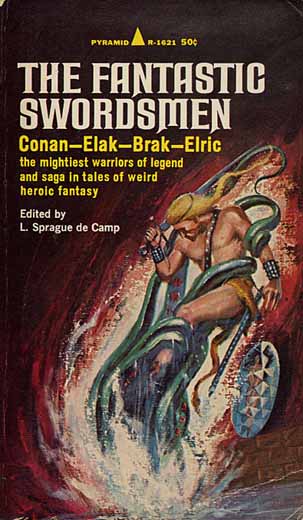
(Here, on the other hand, Leo argues that the only place for poor old “Sacnoth” in an S & S muscle car is: the ejector seat)
(Continue reading this post)
Saturday, June 21, 2008
posted by Leo Grin

Over at his blog, Charles Saunders has just added an interesting new post on the influences driving the protagonist of his latest book of stories, Dossouye. Just click on the link and then click on “Blog.”
Monday, May 26, 2008
posted by Steve Tompkins
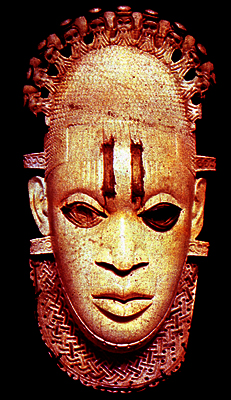
A champion is someone who gets up when he can’t. Charles Saunders, whose “Fists of Cross Plains” (which can be read at Damon Sasser’s REH: Two-Gun Raconteur website) is a blow-by-blow of a fanciful Robert E. Howard Heavyweight Championship staged, and ultimately upstaged by audience participation, in the Texan’s hometown, has earned that Dempseyism. The creator of Imaro of Nyumbani and Dossouye, she who was once an ahosi in the army of the Leopard King of Abomey, has had plenty of practice in shrugging off the slings, arrows, and belaying pins of outrageous publishing misfortune. Most recently, just as he promised in his TC interview last year, he has bounced back to his feet after being floored by the disappointment of Night Shade Books’ decision to give up on a relaunched Imaro series after just two installments, a Short Count to rival the infamous Long Count of the Dempsey/Tunney rematch. Saunders is now working with the most simpatico publisher he’s ever had, himself, and the first offering of that partnership is Dossouye, a “Sword-and-Soul epic” that can and should be ordered from lulu.com.
(Continue reading this post)









